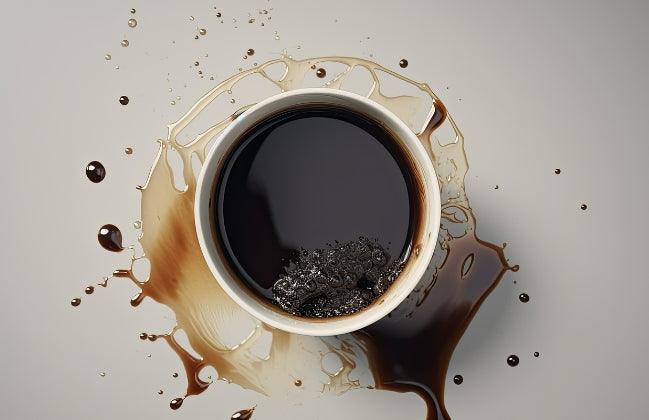The Difference Between Espresso and Coffee: A Comprehensive Guide

The Difference Between Espresso and Coffee: A Comprehensive Guide
When you walk into a coffee shop, the menu often lists a variety of drinks: from espresso to drip coffee, lattes to cappuccinos. Many people wonder: what exactly is the difference between espresso and regular coffee? While both are made from coffee beans, the brewing methods, flavor profiles, and serving sizes are what set them apart. Let’s dive deeper into these differences and explore how each brings out unique characteristics of coffee.
1. Brewing Method
The main difference lies in how they are brewed:
-
Espresso is brewed by forcing hot water (90-96°C) through finely ground coffee under high pressure (around 9 bars). This quick extraction takes about 25-30 seconds and produces a concentrated shot with bold flavor.
-
Coffee (such as drip coffee or French press) uses methods that steep coarser grounds in hot water, extracting the flavors more slowly over 3-5 minutes. The result is a larger cup with a more diluted but complex taste.
2. Grind Size
Grind size affects the extraction process and flavor:
-
Espresso requires a fine grind to maximize flavor extraction in a short time. A coarse grind would result in under-extracted, weak espresso.
-
Coffee uses a medium to coarse grind depending on the brewing method. For example, drip coffee requires a medium grind, while French press uses a coarser grind to avoid over-extraction.
3. Serving Size and Strength
The serving size and concentration also differ significantly:
-
Espresso is served in small quantities, typically 30ml (1 ounce), and is highly concentrated with a rich, bold flavor.
-
Regular coffee is usually served in larger amounts, typically 240ml (8 ounces) or more. While less concentrated, it offers a smoother and more subtle flavor profile due to the larger water content.
4. Flavor Profile
The flavors of espresso and coffee differ due to the brewing methods:
-
Espresso has a strong, rich, and intense flavor. The high pressure extraction results in a more robust taste with a slightly bitter finish, making it ideal for milk-based drinks like lattes and cappuccinos.
-
Coffee offers a milder, more nuanced flavor. The longer extraction time allows more subtle notes, such as fruit, floral, or nutty tones, to develop, leading to a balanced cup.
5. Caffeine Content
The caffeine content in espresso and coffee depends on serving size:
-
A shot of espresso (30ml) contains about 63 mg of caffeine.
-
A standard cup of coffee (240ml) contains around 95-150 mg of caffeine, depending on the brewing method and coffee type.
While espresso is more concentrated, coffee can have more caffeine overall due to its larger serving size.
6. Crema
One distinctive feature of espresso is the crema—a golden, foamy layer that forms on top of the shot. Crema adds richness and texture to espresso, and is considered a sign of a well-made shot.
Regular coffee does not have crema due to the lack of pressure in its brewing process.
7. Equipment
The equipment used for brewing espresso and coffee is different:
-
Espresso machines brew under high pressure and are equipped with portafilters and steam wands. These machines are often more expensive and used by serious coffee enthusiasts or professionals.
-
Coffee makers (such as drip machines, pour-over devices, or French presses) are simpler and less costly. These rely on gravity or immersion and are widely used in homes for everyday coffee brewing.
8. Cultural Differences
Espresso and regular coffee are embedded in different coffee cultures:
-
Espresso is central to Italian coffee culture, where it's often enjoyed as a quick shot at café bars throughout the day.
-
Regular coffee is more common in American coffee culture, typically served in larger cups and sipped more slowly. The term "coffee" in the U.S. usually refers to drip-brewed coffee, whereas in Europe, "caffè" often means espresso unless specified otherwise.
Conclusion
In summary, espresso and regular coffee differ in brewing methods, grind size, serving size, flavor, and caffeine content. Espresso provides a concentrated, bold experience with a thick, rich texture, while regular coffee offers a smoother, more balanced flavor in larger servings.
Both drinks have their unique appeal. If you enjoy intense flavors and quick shots, espresso is for you. If you prefer a more leisurely coffee experience with nuanced flavors, regular coffee might be your go-to choice. Ultimately, the decision between espresso and coffee comes down to personal preference and how you like to enjoy your coffee.
- Tags: zerohero
0 Kommentare






















